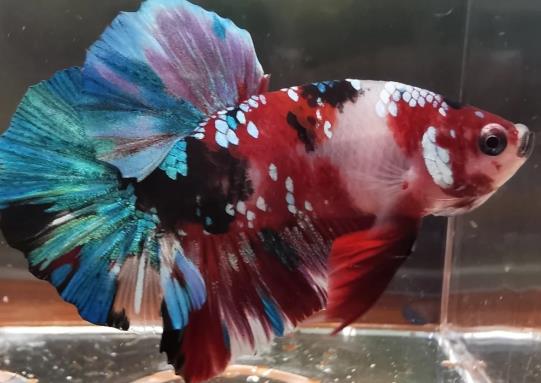Breeding betta fish requires systematic management across several stages, including broodstock selection, breeding environment setup, pairing and mating, and fry rearing. Below are the key steps and important considerations:

1. Broodstock Selection
Male Standards: Body length should be at least 8 cm (5 cm for Siamese fighting fish). Fins should be intact and brightly colored, with a 180° caudal fin spread being ideal. Younger males (8-12 months old) have a higher breeding success rate.
Female Characteristics: Abdomen should be rounded with visible ovarian contours, and there should be a raised white spot on the cloaca. During the breeding season, body color lightens, and females actively approach males. Age is recommended to be 8-12 months, avoiding females over 2 years old.
2. Breeding Environment Setup
Tank Size and Water Level: For Siamese fighting fish, a 40×30×30 cm tank is recommended with a water level of 7-10 cm. Chinese fighting fish require more space (60×40×40 cm). Place duckweed or foam boards on the water surface for males to build bubble nests.
Water Quality and Temperature: Maintain a pH level of 6.5-7.0, hardness of 4-8 (GH value), and a stable water temperature of 26-28°C. Indian almond leaves or black water can be added to stimulate spawning.
3. Pairing and Mating
Gradual Tank Introduction: First, isolate the female in a transparent container. After observing the male building a bubble nest (5-10 cm in diameter) and courtship behaviors (such as fin spreading and zigzag swimming), introduce the female into the tank.
Mating Process: The male wraps around the female to squeeze out eggs, with 5-10 eggs laid each time. The male then carries the fertilized eggs into the bubble nest. Keep the area dark throughout the process and avoid disturbing the fish.
4. Post-Breeding Management
Separating Parent Fish: Immediately remove the female after spawning. The male guards the eggs for 48 hours, during which unfertilized white eggs should be promptly removed.
Fry Hatching: Once the fry fall out of the nest, the male stops guarding. At this point, remove the male and maintain a still water environment.
5. Fry Rearing
First Feeding: Feed paramecia for the first 3 days, ultra-fine brine shrimp from days 4-7, and transition to micro-powder feed after day 8.
Tank Density: 40 liters of water are needed per 100 fry. Include Java moss to provide microbial food sources.
During the breeding process, closely monitor the condition of the broodstock to avoid fighting or stress, and maintain stable water quality at all times.
